Happy Friday! The Dispatch is hiring a vice president of multimedia! If you have 7+ years of experience in the podcasting space and are excited about the prospect of growing our audio and video offerings, check out the job description here.
Quick Hits: Today’s Top Stories
- The House narrowly passed its tax cut and spending bill by 215-214 early Thursday morning, after Republican leadership won over hardliners with last-minute changes. Only two Republicans voted with all Democrats against the measure. The package now heads to the upper chamber, where GOP senators are expected to make significant changes that must be approved by the House. Sen. Josh Hawley has already indicated that he would not support Medicaid cuts, while others have asked for greater reductions. “There is no time to waste,” President Donald Trump said in a post on Truth Social, with Republicans setting a July 4 deadline to pass the bill. The House’s package also increases the debt ceiling by $4 trillion, in keeping with Treasury Secretary Scott Bessent’s request earlier this month for Congress to raise that ceiling by mid-July to prevent a default on U.S. debt.
- The FBI on Thursday searched the Chicago home of Elias Rodriguez—the man suspected of killing two Israeli Embassy workers outside the Capital Jewish Museum in Washington, D.C., on Wednesday—leaving with boxes of evidence. FBI director Kash Patel called the attack an “act of terror,” while White House press secretary Karoline Leavitt said that the Justice Department would be “prosecuting the perpetrator responsible for this to the fullest extent of the law.” President Trump spoke on the phone with Israeli Prime Minister Benjamin Netanyahu and expressed “deep sorrow” over the murders, according to the prime minister’s office. Rodriguez has been charged with two counts of first-degree murder, as well as other offenses, and could face the death penalty if convicted.
- The Supreme Court on Thursday blocked Oklahoma from creating the nation’s first taxpayer-funded religious charter school in a deadlocked decision, despite its recent history of supporting religious schools’ access to government funding offered to secular schools. The unsigned 4-4 ruling, which did not elaborate on the decision or divulge how each justice voted, came after Justice Amy Coney Barrett recused herself from the case. It leaves in place the earlier ruling from the Oklahoma Supreme Court preventing the creation of a Catholic virtual charter school. Because of the split ruling, however, it only applies to Oklahoma, not the entire nation. The Supreme Court could still take up a future case to reconsider the issue at a later date.
- The Supreme Court ruled 6-3 Thursday that the president can fire members of independent federal agencies without cause, in a case brought after President Trump removed members of the National Labor Relations Board and Merit Systems Protection Board. But in the unsigned order, the justices suggested that the president’s power did not extend to dismissing members of the Federal Reserve board or officials on the central bank’s rate-setting committee, describing the Fed as a “uniquely structured, quasi-private entity.” The caveat came amid Trump’s threats to fire Federal Reserve Chairman Jerome Powell, whose term ends in May 2026.
- U.S. District Judge Myong Joun on Thursday blocked the Trump administration’s efforts to dismantle the Education Department, ordering the administration to rehire more than 1,300 employees who were terminated. Under the order, the administration is prohibited from carrying out President Trump’s executive order directing Education Secretary Linda McMahon to “take all necessary steps to facilitate the closure of the Department,” and the department is not allowed to transfer its responsibilities to other agencies. A department without enough employees to complete its congressionally mandated tasks is “not a department at all,” Joun wrote in the preliminary injunction. The Trump administration plans to appeal the decision.
- The Department of Homeland Security (DHS) on Thursday blocked Harvard University from enrolling international students and directed existing international students to transfer or risk losing their legal status. In a letter to Harvard, DHS Secretary Kristi Noem informed the Ivy League that its Student and Exchange Visitor Program certification had been revoked, citing the school’s refusal to turn over the records of foreign students who had engaged in illegal or violent conduct. Nearly 6,800 international students attended Harvard this past academic year, comprising more than 27 percent of its student body. The university denounced the decision as “unlawful,” saying that it “threatens serious harm to the Harvard community and our country.”
- A private jet crashed into a military housing neighborhood in San Diego on Thursday, killing multiple people on the plane and forcing the evacuation of at least 100 people from their homes. The crash set nearby houses and vehicles on fire, destroying several residences. It is still unclear how many people were aboard the plane, but it had capacity to hold up to 10. The accident comes after multiple major plane crashes this year, including a helicopter collision with a commercial aircraft in Washington, D.C., that killed 67 people in January.
‘An Absolutely Shocking System Failure’
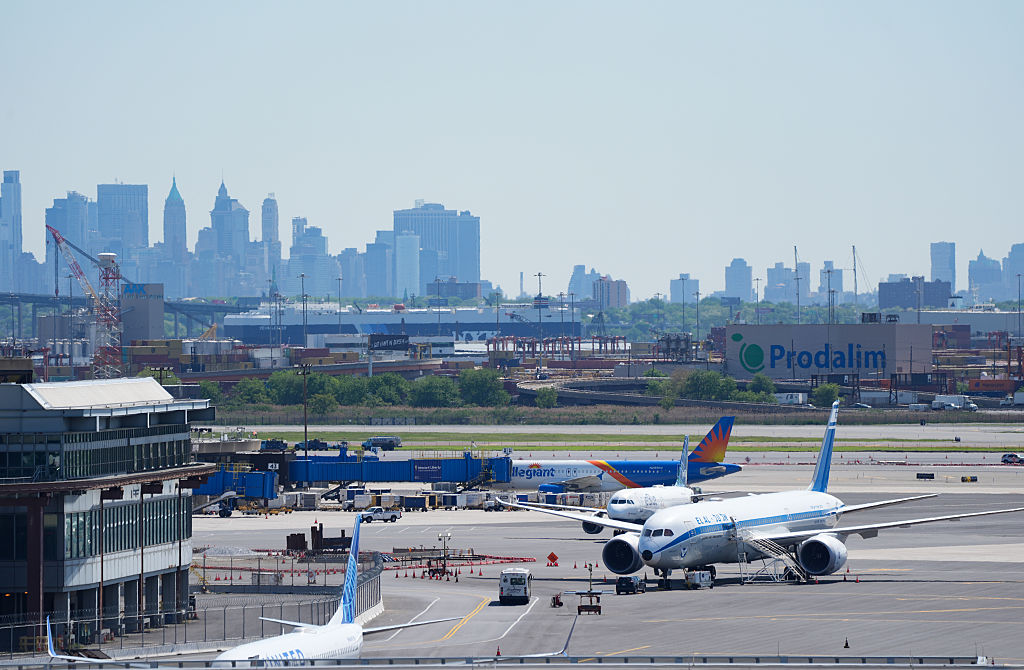
Nearly a third fewer flights will take off and land out of Newark Liberty International Airport, the 12th-busiest airport in the U.S., for the near future. On Tuesday, the Federal Aviation Authority ordered that “operating limitations” be imposed on Newark, following multiple outages of air-traffic control equipment.
The latest outage, at the Philadelphia facility that controls flights coming in and out of Newark, lasted two seconds. But it was the fourth such incident to take place since April 28, some of which were substantially longer: On May 9, the control center lost radio frequencies for a minute and a half. The incidents delayed thousands of passengers and created ripple effects across the entire American air travel system.
Federal regulators have concluded that the only solution is to reduce the flights coming in or out of Newark. “Our goal is to relieve the substantial inconvenience to the traveling public from excessive flight delays due to construction, staffing challenges, and recent equipment issues, which magnify as they spread through the National Airspace System,” Acting Federal Aviation Administration (FAA) Administrator Chris Rocheleau said in a Tuesday press release.
According to the FAA’s new guidelines, takeoffs and landings will be limited to 28 apiece per hour, down significantly from the roughly 38 arrivals and departures that take place in the airport at peak operating capacity. After June 15, the number will tentatively be increased to 34.
The move is expected to ease Newark Liberty’s struggles and allow federal agencies to make urgent repairs to communications systems. But the shutdowns in New Jersey are only the latest examples of the challenges plaguing the FAA, which is grappling with staffing shortages, outdated equipment, and cumbersome funding rules.
Certain factors may have made Newark Airport particularly susceptible to dangerous disruptions. Last year, the FAA shifted responsibility for overseeing the skies around Newark Airport from the New York Terminal Radar Approach Control (TRACON) in Long Island to a TRACON site in Philadelphia. These facilities monitor the intermediate approach of planes (rather than the better-known air traffic control towers, which monitor the landing strips at airports themselves).
The change was an attempt to mitigate staffing shortages exacerbated by the New York area’s high cost of living, but it has been somewhat rocky. Not enough controllers decided to relocate, even after they were offered a $100,000 bonus, forcing the FAA to mandate that some controllers move or be fired.
But the difficulties facing Newark are just acute examples of a nationwide trend. In a report commissioned after a nationwide shutdown of air travel in 2023, the Government Accountability Office found that of the 138 systems used by the FAA to coordinate air traffic—ranging from air-to-ground radios, GPS systems, and weather forecasting tools—105 were classified as either “unsustainable” or “potentially unsustainable.”
Over the past few decades, the FAA has repeatedly asked for money to modernize its operations, but lawmakers have been reluctant to grant it funding. “Congress does not appreciate how fragile the air traffic control system is,” David Grizzle, former chief operating officer for the FAA, told TMD. “The FAA has been begging for money to correct exactly this system that is now presenting all of the problems, and Congress has not funded it.”
Transportation Secretary Sean Duffy has promised to move quickly to repair what is quickly becoming a crisis of air-travel infrastructure. “If we don’t actually accomplish the mission that we’re announcing today, you will see Newarks in other parts of the country, because it’s an aging system,” Duffy said earlier this month while announcing plans to make major equipment upgrades by 2028.
Duffy’s multi-billion dollar plan envisions installing new technology like flight management systems and air traffic control towers, as well as replacements for outdated technology like copper wires and floppy disks. The scheme was hailed by industry leaders, with American Airlines CEO Robert Isom calling it “the best opportunity that we’ve had in decades to do something about our outdated air traffic control infrastructure.”
Some experts who spoke to TMD were similarly optimistic about the plan’s prospects. “I actually believe that we’re going to see substantial amelioration of the situation, including Newark, within three or four months,” Grizzle said, noting how Duffy was aggressively engaging with telecommunications companies to retrofit communications systems. “He gets it, and he’s fully focused on it.”
But others think that the primary focus should be on structural problems in how the FAA operates. The agency is tasked with both regulating and running the nation’s air traffic control systems, creating clear conflicts of interest. “As a general matter, governments everywhere try to avoid having a single government agency regulate something that it is operating,” Dorothy Robyn, a public transportation expert and the former commissioner of public buildings at the General Services Administration, told TMD.
The fact that air traffic control is government-run also means that it struggles to find adequate funding, noted Robert Poole, the head of transportation policy at the Reason Foundation. “You’re not going to fix [the FAA] with a crash program,” he argued, “when you have what basically is supposed to be a high-tech service business trapped inside a federal bureaucracy, funded by a very limited amount of federal tax money, [and] micromanaged by Congress.” Cumbersome government procurement rules and lawmaker scrutiny of high-dollar investments make it very difficult for the agency to effectively modernize its systems.
The structural solution might be to follow international trends and privatize the system. Robyn and others have advocated for the “corporatization” of U.S. air traffic control through the creation of a nonprofit that funds itself with fees on users of its services. The entity could look something like NAV Canada, a privately run non-profit that was created in 1996 in response to Canada’s own problems with aging infrastructure.
But Congress would be wary of such a move. Many legislators oppose reforms because of possible effects on their districts; Oklahoma’s congressional delegation, for example, opposed the opening of a new training center for air traffic controllers because it could potentially undercut the existing FAA Academy in Oklahoma City.
Business and civilian groups are also an obstacle. The industry group for private business jets, the National Business Aviation Association, partnered with the Aircraft Owners and Pilots Association, which includes many who fly for personal reasons, to oppose privatization, fearful of being charged fees for the use of air traffic control infrastructure. “A G5 [a Gulfstream business jet] flying across the country uses exactly the same amount of air traffic control resources as a triple seven [a Boeing 777], and yet they pay a teeny fraction of what commercial aviation does,” Grizzle explained.
The end result is an agency that is unable to make long-term investments. Take, for example, the ASDE-X, a system that tracks where planes are on an airport’s runway in real time. The technology is currently installed in 44 airports, and last year, the lack of such a tracker at Austin’s airport contributed to the near-collision of a landing FedEx cargo plane and a Southwest aircraft already on the runway, as controllers’ views were obscured by morning fog. But installing the same technology in more airports likely wouldn’t be a cure-all: The system dates back to the 1980s and can be difficult to repair.
While a lack of funding, then, might be part of the FAA’s problem, the existing system is not likely to produce quick or effective solutions, Poole argued. “It’s not clear that a crash program of billions of federal dollars, all of a sudden dumped on the agency, is going to enable it to do any of those things in a timely fashion,” he said.
But time is of the essence. Newark might be getting the most news coverage, but as U.S. travelers head into a busy summer travel season, the FAA’s deficiencies are not restricted to New Jersey. Just last week, air traffic controllers at Denver International Airport lost communications with incoming planes for roughly two minutes after multiple radio transmitter failures.
“We know that the problems have gone back decades in some cases,” Rep. Robert Garcia, a California Democrat on the Transportation and Infrastructure Committee, said at a hearing Wednesday. “But it’s still an absolutely shocking system failure, and we need immediate solutions.”
Today’s Must-Read
Forget standing upon a bully pulpit. President Donald Trump prefers to humiliate other leaders seated, in the Oval Office, before TV cameras. Consider the scene that unfolded this week with the visit of South African President Cyril Ramaphosa. The White House press pool squeezed into the crowded Oval Wednesday as Trump and his counterpart exchanged pleasantries. The leaders were flanked on the couches by their respective government delegations. Trump pointed out the presence of two of South Africa’s legendary golfers, Ernie Els and Retief Goosen, as Ramaphosa smiled, perhaps relieved that his gambit to appeal to the golf- and celebrity-attuned American president had worked. Unfortunately it had not, as Ramaphosa found out a few moments later, when members of the media began asking questions and the mood in the room shifted.
Toeing the Company Line
Looting the Palace
A big, beautiful symbol of American decline.
The States Have Concealed-Carry Reciprocity Well in Hand
Congressional action is both unnecessary and unlikely to worsen violent crime.
A Familiar Fight Over Spending
Trump and Johnson experienced the same headaches past Republican leaders have faced.
No Regrets
Senate Democrats won’t admit to missteps when they attacked Robert Hur in 2024.
The House GOP’s Medicaid Plan Won’t Fix Health Care
The plan is likely to leave millions without insurance while doing nothing to improve American health care.
Biden’s Big Beautiful Cover Up
Plus: A brief explainer of the House’s ‘One Big Beautiful Bill Act.’
Worth Your Time
- For Tablet magazine, Armin Rosen reflected on his encounter with Israeli diplomat Yaron Lischinsky just 30 hours before Lischinsky’s murder outside the Capital Jewish Museum on Wednesday—and on the unique challenges of representing the Jewish state on the world stage. “In my experience the diplomats of the Jewish state are among the least Israeli of Israelis. They are restrained and secular and quiet and usually know how to dress themselves; they speak with every possible accent, and it’s hard to imagine them whacking at a matkot ball, fighting their way onto a bus, or davening during halftime of a basketball game. They are the normal and cosmopolitan faces of a rambunctious and inherently tribal country,” he wrote. “But it is the tension between the rigors of diplomacy and the character of their homeland that also makes them deeply Israeli: whatever their religious practice and whatever their politics, Israeli diplomats are inevitably Jews among the nations, a tiny sub-tribe that serves as the official foreign representation of the world’s only Jewish state, the first in 2,000 years and one of the most hated and lied-about countries in the entire history of humankind. To carry out this mission for fairly low pay on behalf of an often-dysfunctional foreign ministry, in places far from home where spies and activists and journalists and local Jews are circling you or even actively targeting you at any given moment, requires a typically Israeli mix of creativity, resourcefulness, and optimism.”
Presented Without Comment
NBC News: Trump’s Crypto Dinner Cost Over $1 Million per Seat on Average
More than 200 wealthy, mostly anonymous crypto buyers are coming to Washington on Thursday to have dinner with President Donald Trump. The price of admission: $55,000 to $37.7 million.
That’s how much the 220 winners of a contest to meet Trump spent on his volatile cryptocurrency token, $TRUMP, according to an analysis by the blockchain analytics company Nansen.
The top $TRUMP coin holders at a specific time — determined by the dinner’s organizers — secured a seat.
Also Presented Without Comment
CNN: Wealthy Foreigners Able To Register for Trump’s $5 Million ‘Gold Card’ Visa Within a Week, Said [Commerce Secretary Howard] Lutnick
In the Zeitgeist
Disney’s live-action remakes of their classic animated films have been a mixed bag, to say the least. But their newest movie, Lilo & Stitch, looks like a box office slam dunk. The National Research Group expects the film to rake in $165 million over Memorial Day weekend.
Let Us Know
Do you frequently travel by air? Are you concerned by recent aviation incidents?

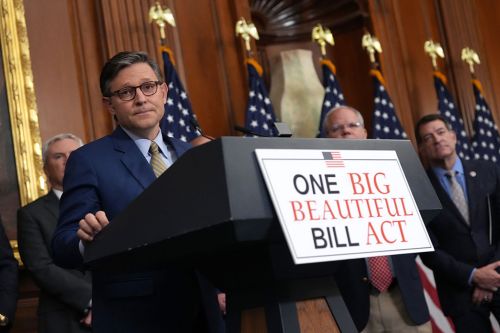
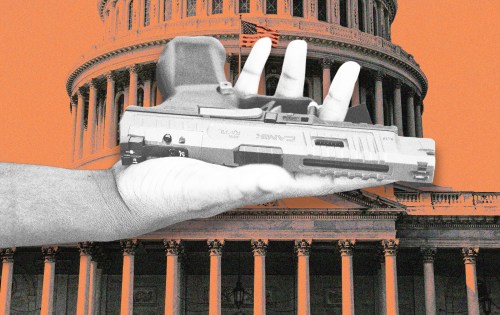
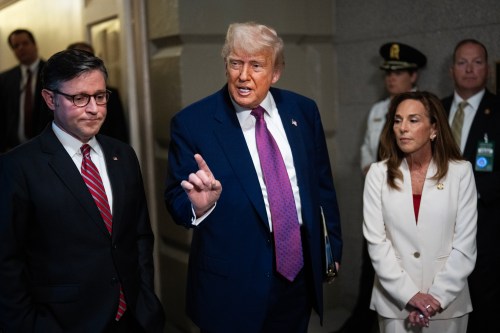
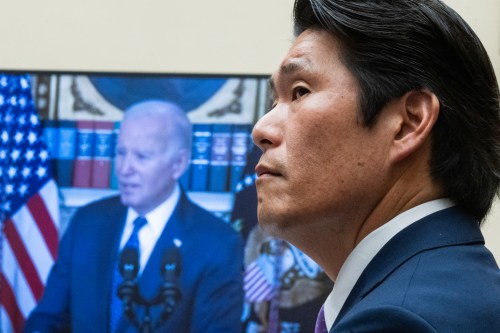







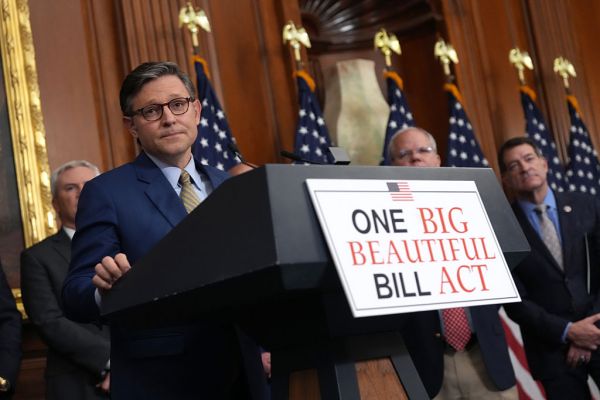


Please note that we at The Dispatch hold ourselves, our work, and our commenters to a higher standard than other places on the internet. We welcome comments that foster genuine debate or discussion—including comments critical of us or our work—but responses that include ad hominem attacks on fellow Dispatch members or are intended to stoke fear and anger may be moderated.
With your membership, you only have the ability to comment on The Morning Dispatch articles. Consider upgrading to join the conversation everywhere.